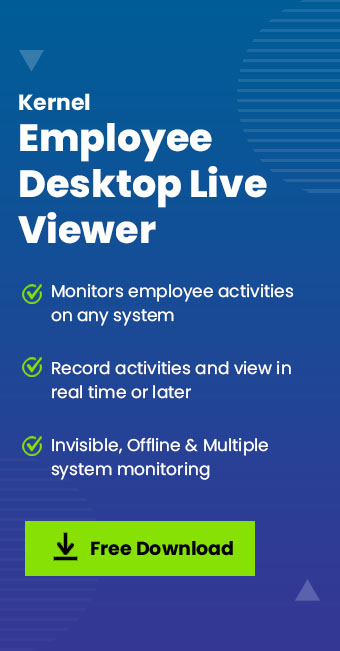Read time: 5 minutes
Burnout is a very real phenomenon in the workplace. When employees are pushed too hard for too long, they may start to feel overloaded and unhappy. This can lead to decreased productivity and even resignations.
When it comes to reducing employee burnout, it’s important to monitor several key metrics. By tracking these metrics, you can identify early signs of burnout and take corrective action before employees become exhausted completely. Here are six metrics you can track to help keep your team healthy and motivated.
Metrics to monitor for reducing employee burnout
Employee burnout is a major issue faced by businesses today. By definition, employee burnout is “a state of physical or emotional exhaustion that results from prolonged or excessive stress.” When left unchecked, employee burnout can lead to decreased productivity, increased absenteeism, and high attrition rates.
Fortunately, these metrics can help reduce the risk of burnout among your employees. Here are six of the most important ones:
- Work-Life Balance
Many people view work-life balance as a challenge that mainly affects working parents, but the truth is that it can be a problem for any employee. When work and personal responsibilities are constantly competing for our time, it can lead to serious burnout.
One of the best ways to reduce employee burnout is to ensure they have a healthy work-life balance. This means giving them time off to relax and rejuvenate, ensuring that their job responsibilities don’t consume every moment of their day.
Here are a few tips for helping your employees achieve a healthy work-life balance:
- Encourage them to take regular breaks throughout the day.
- Let them telecommute or work from home occasionally.
- Offer flexible hours so they can adjust their work schedule to fit their personal needs.
- Encourage them to take vacation days and use all of their vacation time.
- Job Satisfaction
- Focus Sessions
- Breaks are Important
- Set Clear Expectations
- Manage Multitasking
Those employees who feel their job is meaningful and connected to the company’s mission or purpose are significantly less likely to feel burned out. Rather than working just for a paycheck, people want to contribute to something meaningful. Companies must show that employees’ efforts are meaningful.
A focus on how employees’ work changes the organization, industry, or world. It is particularly helpful in preventing or reducing burnout. A company that cultivates a sense of purpose among its employees clarifies its mission and helps employees understand how their role and daily tasks contribute to achieving it.
In focus sessions, workers engage in deep thinking without interruptions. Workforce analytics tools can measure this metric in order to assess employee productivity and identify the areas for improvement.
The duration and frequency of focus sessions tend to lower stress levels and improve output quality. It can be hugely beneficial for both the mental health and overall productivity of employees as it helps to identify what is disrupting their focus sessions.
In some companies, overwork is celebrated as a virtue. Dedicated people log more hours and lose more evenings. The problem is this completely messes up work-life balance. Moreover, it’s not sustainable for anyone.
It is important to take meaningful breaks. Research finds that 90% of professionals are more productive after working out, while 95% feel less stressed. Encouraging your staff to develop healthy habits will benefit them all.
Making sure your employees have time to practice healthy habits goes beyond making sure they have time to exercise. For a budget-friendly alternative, opt for an activity challenge. Taking physical breaks that leave employees feeling refreshed can help a company’s employees prioritize their health.
Keep an eye on your team & do employee monitoring to make sure they are not working too hard.
The lack of transparency, communication, and purpose destroys the trust among employees. When employees are not engaged in a common cause, they become disengaged and burn out.
Ensure clear guidelines and regular communication about expectations to avoid this kind of disengagement. Organize team meetings to review goals, discuss progress, and resolve important issues. Provide your employees with one-on-one attention so they can clarify their performance and expectations. Maintain an open line of communication with your team and speak often so they stay informed and engaged.
Multitasking seems like an excellent way to maximize your productivity, doesn’t it? While it may seem efficient to switch between unrelated tasks, switching between them is actually terrible for productivity.
Distractions and changes in momentum are common. The number of times your teams switch between different tasks and applications can indicate how many focused hours each team can dedicate to their work.
When staff is overloaded with work, productivity and quality may decrease, resulting in more stress. If you’re in this situation, you might want to reach out to your distracted employee and see if they’re willing to find a way to get more focused time back.
Can monitoring help in improving productivity?
With these metrics, we must make sure that we are not interfering too much with the lives of employees. Also, we need to use technology to improve productivity. For this, you can monitor your employees with the Employee Desktop Live Viewer tool. It is a simple, convenient way to observe work-from-home employees, record their activity, and monitor employee Skype chat conversations along with their performance in real-time. The stealth monitoring facility is provided even on remote employee desktops. No matter where the employee is located, the tool records and saves employee activities at any time.
Last say
Burnout is a real problem in the workforce, and it can have serious consequences for both employees and businesses. But by monitoring these six metrics, you can help reduce the chances of your employees burning out. To keep a check on your workforce, you must use the Employee Desktop Live Viewer tool and counter the issues of employee burnout.







